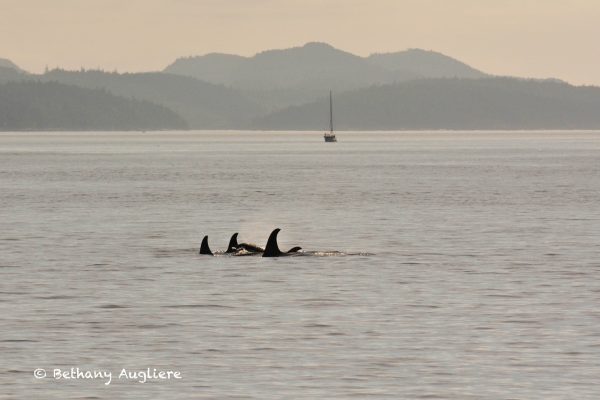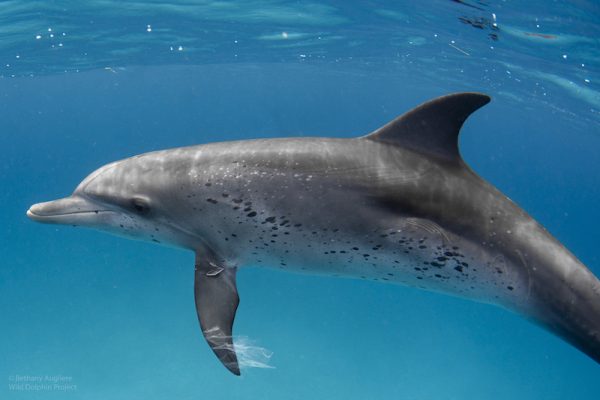Animal Behavior: interspecies versus intraspecific interactions
In the Bahamas, the Wild Dolphin Project led by Dr. Denise Herzing, studies both the common bottlenose dolphin (Tursiops truncatus) and the Atlantic spotted dolphin (Stenella frontalis), who coexist on the sandbank. This means they are sympatric — occurring within the same geographic range. While the two species eat
Meet the team: Board Member Edition
Meet the team: Board Member Edition Ruth Petzold always loved the ocean. She grew up in Michigan, but spent her summers in New Hampshire, snorkeling and searching in tidal pools for clams, snails and sea stars. She even collected critters from the beach and sneaked them back to her grandfather’s
Dolphin Communication
We know animals communicate, but do they have language? Dr. Denise Herzing, research director of Wild Dolphin Project, founded the scientific nonprofit in 1985 to learn more about the communication and behavior of wild dolphins. She’s an expert at understanding their sounds. Denise has given countless presentations on the subject,
Who is Toki?
On March 30, 2023, the Miami Seaquarium, which recently came under the management ofThe Dolphin Company, entered into an agreement with Friends of Lolita, a non–profit organization to return Lolita, a killer whale, to an ocean sanctuary, according to a press release. Every major news outlet as covered the story from the New
6 Awesome Facts About Spotted Dolphins in the Bahamas
Denise Herzing, Ph.D., founder and director of the Wild Dolphin Project, has been studying Atlantic spotted dolphins (Stenella frontalis) in the Bahamas since 1985. Since that time, she’s learned a lot about their social behavior, communication, feeding behavior, ecology, and social structure. Dolphins are mammals, which means they breathe air
How Long Can Dolphins Hold Their Breath?
Imagine always holding your breath — while running, talking, eating and sleeping. How long can you hold your breath? 30 seconds, 1 minute or 2? Well, some whales can hold their breath over an hour, necessary for a life in the sea. Dolphins and whales, together known as cetaceans, are
Save the Dolphins: Looking Ahead to 2023
It’s almost the end of another year. Goodbye 2022. But, as we look to the new year, we want to be inspired about the ways we can help save wild dolphins and other marine mammals. We know the whales, dolphins, manatees, and polar bears are in trouble. Manatees are dying
Climate Change and the Bahamas
“It’s difficult to imagine how these shallow water environments will continue to sustain many top predators in the future — not with many more storms at that intensity,” said Diane Claridge, Ph.D., executive director of Bahamas Marine Mammal Organization (BMMO). With sprawling seagrass meadows, meandering mangroves that hug the shoreline, and
Hunting
The Wild Dolphin Project was started by Dr. Denise Herzing back in 1985. Since then Dr. Herzing, along with her colleagues and graduate students, put out multiple peer reviewed research papers on the behavior, acoustics, and ecology of the two species we study in the Bahamas. Over the years she
Synchrony
The Wild Dolphin Project was started by Dr. Denise Herzing back in 1985. Since then Dr. Herzing, along with her colleagues and graduate students, put out multiple peer reviewed research papers on the behavior, acoustics, and ecology of the two species we study in the Bahamas. Over the years she









